Chapter 5
Skyscrapers and Chicken Plants: Mexicans, Latinos and Exurban Immigration Politics in Great Charlotte, 1990-2012
Chapter Five of Corazón de Dixie focuses on the lives of Mexican immigrants on the outskirts of Charlotte, North Carolina. The author conducted interviews with Mexican immigrant women in the exurb of Union County to Charlotte’s east, but the book also discusses (on pages 204-6) the passage of a 2006 anti-immigrant ordinance in Gaston County to Charlotte’s west. Though the author did not conduct interviews with immigrants in Gaston County, Charlotte’s Spanish-language newspaper, La Noticia, did cover the area in its pages. Their coverage shows that while Gaston County’s elected officials supported anti-immigrant policies during the 2000s, the area’s Mexican and other Latino immigrants encountered a wider range of attitudes than one might expect.
After watching the video of the Gaston Board of Commissioners debate and reading these articles from La Noticia, consider the following question: Which groups of Gaston County residents were more likely to agree or disagree with the area’s anti-immigrant policies in the 2000s, and what main arguments did each side make for their position?
For help reading untranslated newspaper articles in Spanish, see this Guide to newspaper vocabulary and these tips on comprehension.
Primary Sources
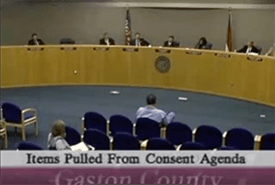
Gaston County Board of Commissioners meeting video, November 9, 2006.
This video shows the commissioners of Gaston County debating an anti-immigrant ordinance. You can find context for the commissioners and their debate on pages 204-6 of Corazón de Dixie, then learn even more specifics about the area’s anti-immigrant politics by watching the entire debate.
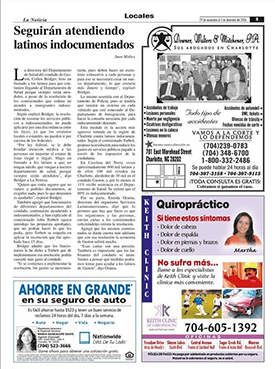
Juan Maltes, “Some will continue serving undocumented Latinos,” La Noticia, November 29, 2006.
Within weeks of the anti-immigrant ordinance’s passage, a representative of the local Health department was ready to declare that her department was unable to comply with the local ordinance, due to federal laws that superseded local ones. Furthermore, she explained to the ordinance’s sponsor, Commissioner John Torbett, checking everyone’s legal status would cost the county more money than the initiative was likely to save.
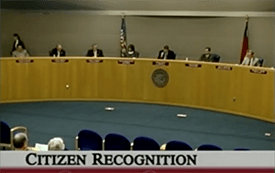
Gaston County Board of Commissioners meeting video, December 14, 2006.
Five weeks after the Gaston County Board of Commissioners approved its anti-immigrant ordinance, several citizens went before the board to express their disagreement with the measure. While the Board refused to reconsider the legislation, the incident nonetheless allows historians to learn about the allies Mexican and other Latino immigrants did have in Gaston County.
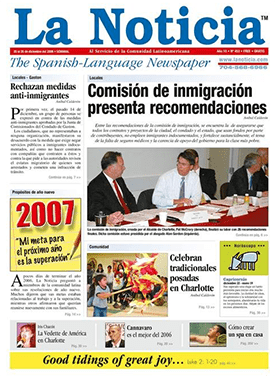
Aníbal Calderón, “People reject anti-immigrant measures,” La Noticia, December 20, 2006.
This article reports on the Board of Commissioners meeting in Document 5.3. If you watch the video before reading the article, the article will be much easier to understand.
For help reading this article in Spanish, see the Guide to newspaper vocabulary
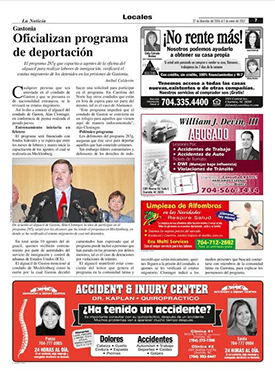
Aníbal Calderón, “Deportation program put into place,” La Noticia, December 27, 2007.
Gaston was one of many counties in the U.S. South to sign on to the federal government’s 287g program in the mid-2000s. This program, which has since come under intense criticism, helped local law enforcement agencies identify people without legal immigration status and refer them to Immigration and Customs Enforcement. This article from La Noticia suggests that Gaston County’s sheriff, Alan Cloninger, was well aware of the fear that such initiatives provoked in Latino communities. However, keep in mind that the Gaston County Sheriff’s Office did not have jurisdiction in the county’s largest city, Gastonia, which has its own police department.
For help reading this article in Spanish, see the Guide to newspaper vocabulary
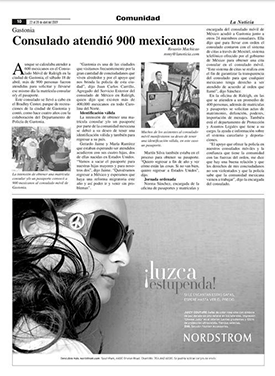
Rosario Machicao, “Gastonia – Consulate served 900 Mexicans,” La Noticia, April 22, 2009.
This article discusses the consulado móvil (mobile consulate) that was sent from Raleigh to attend to Mexicanos living near Gastonia. Of particular interest are the ways consulate officials praise the Gastonia Police Department and its relationship with the Mexican immigrant community (and note that the Gastonia Police Department is distinct from the Gaston County Sheriff’s Office). After reading Chapters 4 and 5 of Corazón de Dixie, however, be sure to think critically about the consulate’s relationship with, and knowledge of, the Mexican community it served in in the early twenty-first century. Then evaluate to what extent can the consulate’s observations be accepted as fact.
For help reading this article in Spanish, see the Guide to newspaper vocabulary
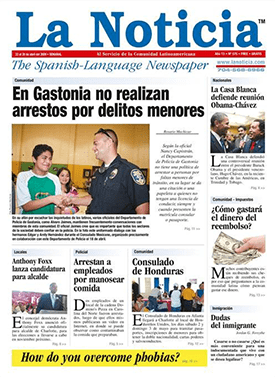
Rosario Machicao, “In Gastonia they do not arrest people for minor crimes,” La Noticia, April 22, 2009.
A year and a half after the Gaston County Sheriff’s Office began to implement 287g, a spokeswoman for the city of Gastonia’s Police Department, a distinct agency, spoke with La Noticia about her department’s many efforts to build relationships in the Latino community. In addition to the policies and programs she discusses, notice the two photos, which were taken at the Mobile Consulate event discussed in the previous article. What image were the police officers trying to project to Latinos by posing for photos like these, and what does that say (or not) about the Gastonia Police Department?
